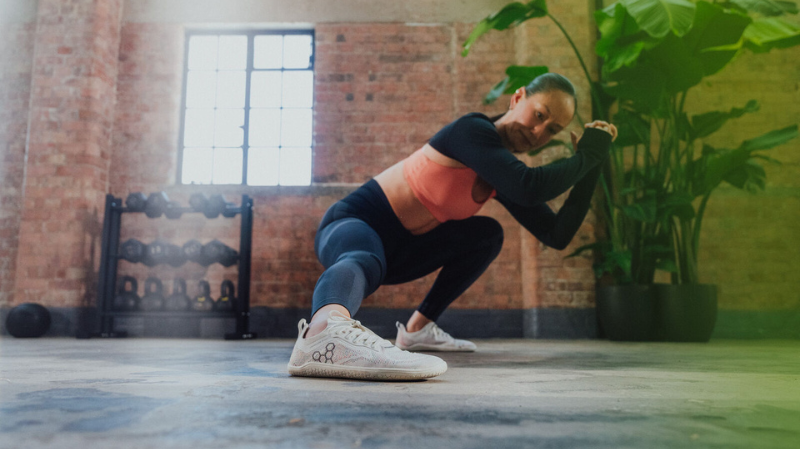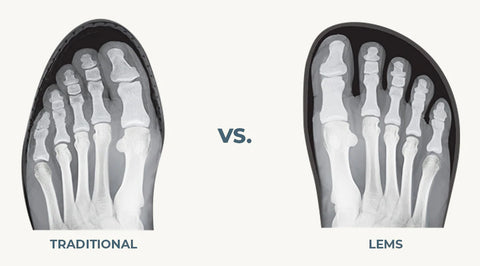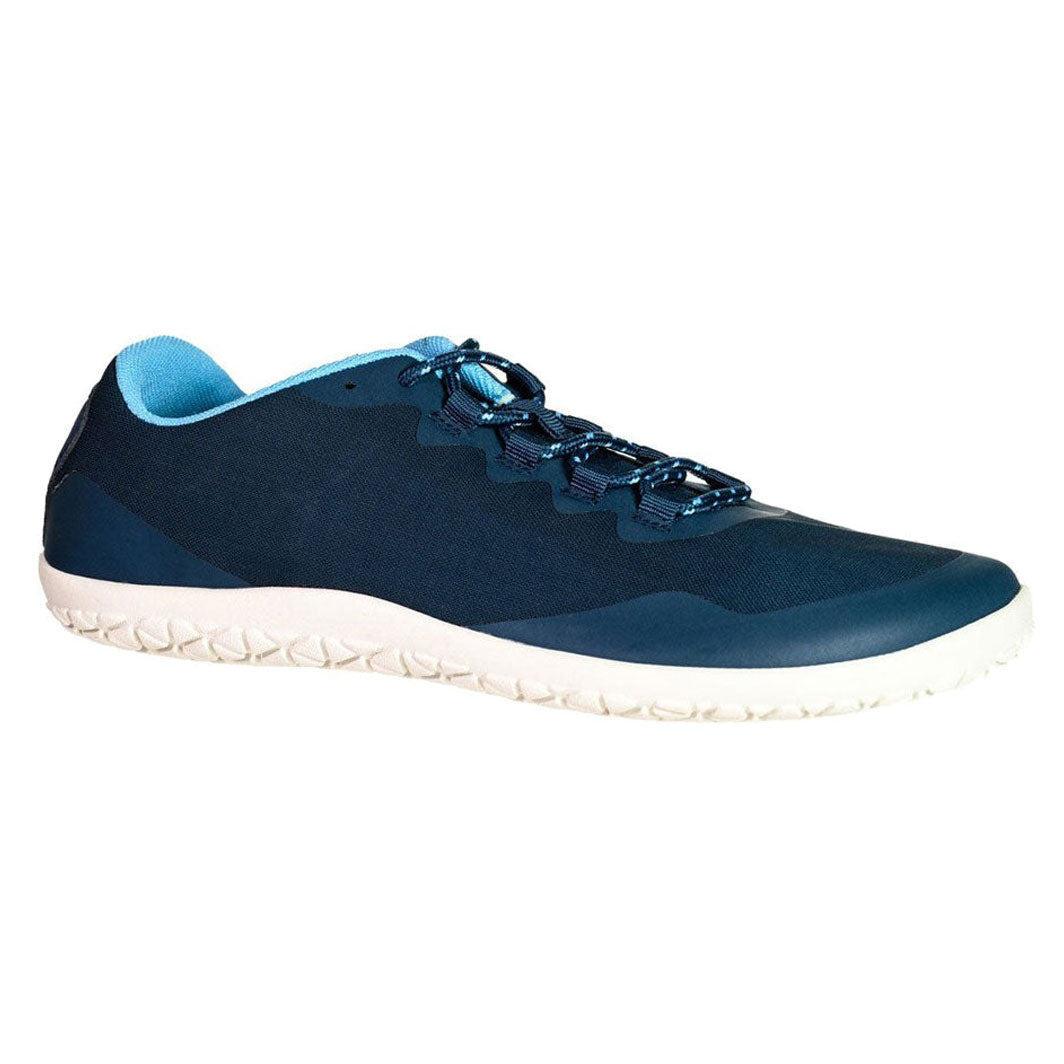It may be hard to believe this, what with the myriad of options at our disposal and our constant use of them, but somewhere along the way, humans forgot why shoes were ever created! No, it’s not as simple as “to protect our feet, of course”; we say this because there are two ways in which your feet need protection and, unfortunately, modern shoes offer just one of them.
As history has recorded, footwear was first created to protect the soles of the feet from cuts, burns, and many other things that would cause pain or harm. In order to do this, prehistoric people made footwear with nothing but raw materials like leather, straw, and other plant-based materials. As far as designs go, what we are now accustomed to in the form of flip flops, sandals, and moccasins, these individuals created without ‘fashion’ or aesthetics ever being a factor. More importantly, while the primary purpose of making shoes was to protect their feet, it also protected their natural foot function; this is exactly where they one-upped modern footwear.
With the evolution of modern shoes, priorities changed. Suddenly, there were more specific requirements for shoes to meet that involved a lot more ‘protection’ when performing various activities; however, not much consideration was given to potential long-term damage. This has caused a major compromise in natural foot function which subsequently leads to disorders, pain, and dysfunction. Nevertheless, with the technology to carry out extensive research on the subject, shoemakers are going back to basics and creating ‘natural’ footwear in a bid to reverse the negative effects of wearing modern shoes for most of our lives.
What is Natural Footwear?
When you hear the word ‘natural’ associated with anything related to clothes and shoes, you immediately think that it refers to the type of materials used. In the case of natural footwear, they are typically made from both vegan and non-vegan materials, however, what the term really speaks to are the specific features of the shoe that encourage optimal foot health.
Commonly referred to as ‘barefoot’ or ‘minimalist’ footwear, natural shoes are basically designed to mimic barefoot activity. In other words, just like when you are barefoot, they do not restrict mobility, crush your toes, or interfere with the ways in which your feet move and function naturally. Not only does this eliminate the harmful effects of modern or traditional shoes, but it allows the feet to feel, move, grow and develop as they should.
For anyone that is either skeptical of transitioning to barefoot shoes, or unaware of these healthy alternatives, it is advisable to take the time to understand what natural shoes are all about, and why they are a better choice over the endless types of modern shoes that have been flooding the market since their inception.
Barefoot Shoes vs Conventional Footwear
Regardless of your reasons for wearing certain types of shoes, it is important to always look for healthy options. Up until now, you probably looked for the most visually appealing shoes and perhaps, the most comfortable pair in that particular category; however, unless they are naturally designed, they are not serving you or your feet as well as you think.
So, now that you are aware of the fact that natural footwear encourages natural foot function while modern shoes do the exact opposite, let’s find out why. Here are the key differences between barefoot shoes and modern shoes.
Foot-Shaped vs ‘Shoe’-Shaped
The fact that we can say ‘shoe’-shaped and guarantee that almost everyone will understand or envision what we are talking about, is worrisome. This is because it is something that should never have come into existence in the first place. The irony of it all is that, although modern shoes are not shaped like natural feet, most people don’t realise it because the shape of their own feet has been altered. This deformity is owed to years of using narrow, regular shoes that have pushed the toes together and caused them to point inward rather than outward.
For a better understanding of how drastically one’s foot shape can morph into an unnatural shape, take a look at babies’ feet; you will see that they are the widest at the toes (from the big toe to the little toe). This is our primal foot shape which is why natural shoes are foot-shaped. They are designed with wide toe boxes that allow natural toe splay as opposed to modern footwear that tapers at the top. This decreases your chances of developing various foot/toe deformities and disorders
Zero Drop vs Elevated Heels

Raised heels, over time, change your natural gait which is really not something you want to stray from. On top of this, elevated heels compromise ankle function, cause tension in the lower back, throw your body out of balance, and also affect your posture. The reason why these many different ill effects occur is owed to your heel striking the ground first as opposed to both your heel and the ball of your foot. This sends vibrations that can travel up the calves, lower back, neck, and shoulders, thereby causing stress to these regions which result in pain or discomfort. It may seem insignificant at first, however, constant heel-striking certainly takes its toll over time.

Most modern pairs of shoes typically have some amount of heel elevation, not to mention toe elevation which is equally bad, while barefoot shoes are completely flat. This ensures that your feet are level from heel to toe, and encourages a more natural gait pattern. Needless to say, it counters all the negative effects that come with heeled shoes!
Thin Soles vs Thick Soles
If you’ve ever worn a pair of shoes with a thin sole, you would have felt almost every bit of unevenness on the ground as you walked around. In fact, everything from climbing stairs to walking on gravel would have felt different and perhaps, even uncomfortable. Unfortunately, this discomfort is looked upon as a negative thing when, in fact, it is just the conditioning your feet require to become stronger and more resilient.
So, in one’s quest for comfort, thick soles and excess cushioning are two things that are sought after, both of which modern shoes so generously offer. What the wearer doesn’t understand, however, is that this eliminates the sensory feedback required by the brain to adapt to different textures and surfaces. As you may have guessed, this leads to poor balance which, in turn, makes you more prone to falling down. With natural footwear, on the other hand, the thin, flat soles encourage resilience, mobility, and better functioning of the feet. They help to restore your natural foot function and, it should also be noted that during your transition to barefoot shoes, the discomfort will be replaced by an appreciation and love for the various new movements and sensations your feet are introduced to!
Flexibility vs Rigid Materials
A significant amount of foot flexibility and mobility is lost in a pair of stiff-soled shoes with equally rigid materials that make up the exterior. The wearer may feel like their feet are well-protected in them but the reality is that nothing good comes from restricting your feet in this manner. In fact, many of you may be able to recall the relief you feel when you get out of a pair of modern, rigid shoes!
Apart from being more comfortable, flexible shoes allow your feet to move as if they are not clothed at all. That truly is the goal as our feet require variation and regular flexing in order to restore natural, optimal function. Additionally, increased mobility and flexibility also help to develop and strengthen joint function, muscles, and tendons in the foot.
Lightweight vs Heavy
Finding shoes that are lightweight is not always easy. This is because modern footwear uses many different materials and complex designs that, collectively, make for a heavy pair of shoes. From fully-cushioned insides to thick soles and heels; together, they contribute to the shoe’s overall weight which can really add up. The problem with heavy shoes is that they tend to weigh your feet down which limits mobility. On top of that, they are no good for your back either, often causing or adding to back pain and strain.
With natural shoes, the designs are stripped down to the basics, just the way they should be! By doing away with unnecessary features that are either influenced by trends or extreme comfort that leads to dysfunctional feet, barefoot brands create minimalist shoes that are ultra-light, flexible, and wide (foot-shaped). Of course, durability, quality, and comfort are also prioritised while ensuring that natural foot function is not disrupted.
CONCLUSION
Natural footwear is not a term that is limited to the types of materials used to manufacture this specific category of shoes; instead, it describes the footwear’s design that is intended to preserve or restore natural foot function. Also referred to as barefoot or minimalist shoes, when worn, natural footwear provides the feet with a maximum range of motion, stimulates muscle growth, and aids in making feet more adaptable and resilient. To top it off, better foot function means improved balance, mobility, and overall foot health that reduce the risk of foot disorders and other problems that stem from poor foot health.
When compared to modern or traditional types of footwear, barefoot shoes counter each and every damaging feature of regular shoe designs that we have become accustomed to since footwear evolved. These key differences include substituting narrow toe boxes for foot-shaped designs; elevated heels for flat or zero drop bases; thick soles for thin soles; rigidness for extreme flexibility; and weighted designs for ultra-lightweight materials.
At bprimal, we work with shoemakers and brands who create natural footwear that are made to encourage better foot health by repairing the damage caused by long term use of modern shoes. These minimalist or healthy footwear alternatives ensure proper preservation of one’s natural foot shape and function thanks to their inclusion of all the design specifics needed to achieve optimal foot health. Some of these features include wide toe boxes, slim and flexible soles, and no heel elevation. Our involvement and interaction with people who create and promote products that help individuals fix their foot problems has also inspired us to spread crucial awareness – relating to prioritising foot health as told by the experts – via our blog. Learn More - check out bprimal educational articles here, and browse through the different brands and collections of natural footwear and foot health restoration products we carry.
DISCLAIMER:
The above content is for educational or informational purposes only and is not intended to replace or augment professional medical instruction, diagnosis, or treatment. Read the full Terms and Conditions & Disclaimer here.



























